Incredible footage shows ultra-rare beast glaring at camera as it’s spotted creeping through desert park for first time in half a century: ‘Full chills’
In the blink of an eye, an endangered wild animal has been spotted in a desert park for the first time in half a century.
The elusive ocelot was caught on camera in southern Arizona, the first confirmed sighting of the species in the region in 50 years.
The rare wild cat was captured on video in June by trail cameras set up by the Phoenix Zoo’s Atascosa Complex Wildlife Study in the Nogales Ranger District of the Coronado National Forest.
The cameras were installed in April as part of an ongoing wildlife survey.
Ocelots are medium-sized wild cats native to parts of the southern United States and Mexico. They have been listed as an endangered species in the United States since 1972.
Ocelots, medium-sized wild cats native to parts of the southern United States and Mexico, have been listed as an endangered species in the United States since 1972.
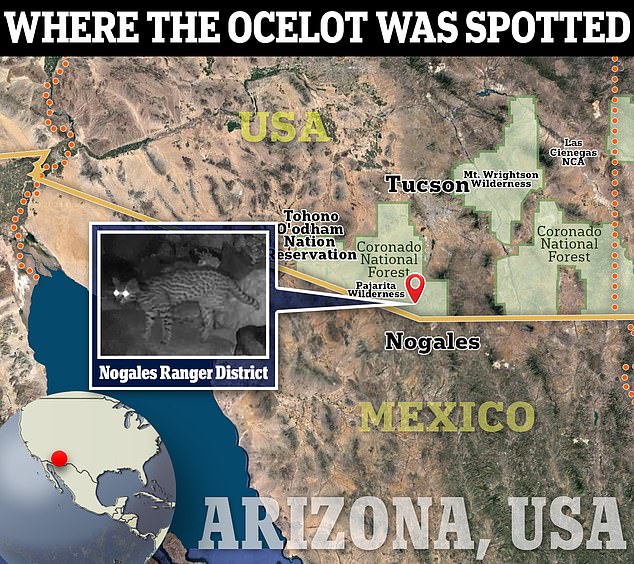
The rare wild cat was captured on video in June by field cameras set up by the Phoenix Zoo’s Atascosa Complex Wildlife Study in the Nogales Ranger District of the Coronado National Forest
They are threatened by hunting and habitat loss, making this sighting extra important for conservation.
Although ocelots are twice the size of the average domestic cat, they are significantly smaller than other wild cats.
According to National Geographic, these felines are threatened by natural predators such as harpy eagles, pumas, jaguars and anacondas.
Even more amazing is that the sighting would have gone almost unnoticed if the researcher had not been watching it with eagle eyes.
Kinley Ragan, the zoo’s field research project leader, explained the project and described the feeling she had when she saw the ocelot. She said she felt “shivers” go down her body as she saw it in disbelief.
“This particular location required a 40-minute walk to the site as temperatures reached 95 degrees,” Ragan said in the zoo’s press release.
“The ocelot video was one of the last videos I watched. I got chills of excitement and pride at what we had captured,” she said.
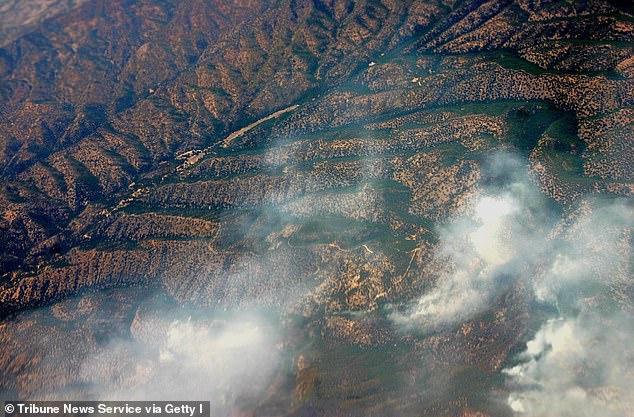
Pictured: The somber yet picturesque landscape where the Ocelot was captured
‘I couldn’t believe it at first and watched the video over and over again. But soon a big smile appeared on my face, because I realized that this discovery had a major impact on this important field.’
Tracy McCarthey, regional non-wildlife specialist, confirmed the finding and emphasized the importance of this rare sighting.
“AZGFD performed an analysis of the fur of this ocelot, comparing it to the current known ocelot in the state, as well as to previous ocelots. The conclusion is that this is indeed a new ocelot.”
What makes this discovery so special is the habitat in which the ocelot was found.
The cat was spotted in desert scrub at a lower elevation than most historical records of the species in Arizona, possibly indicating a change in its habitat or behavior.
Zoo staff and volunteers will be back in the field this month to collect additional camera data from the spring and summer.
The research team aims to collect data over 18 months so that seasonal differences in wildlife patterns can be analysed.
They hope to find more reports of this new ocelot and other important sightings as data analysis continues.
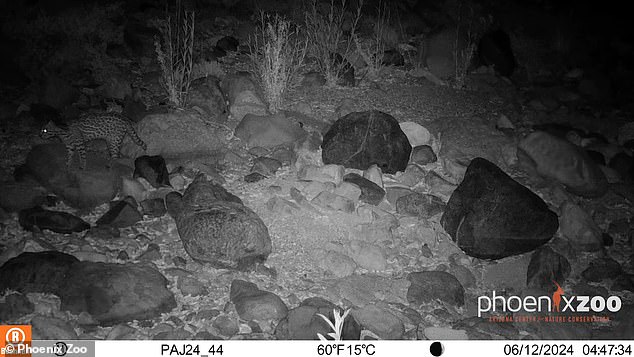
The elusive ocelot has been captured on camera in southern Arizona, marking the first confirmed sighting of the species in the region in 50 years
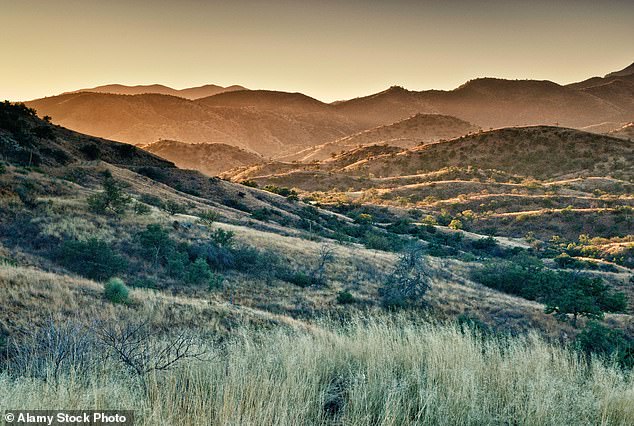
The cat was spotted in desert scrub, as pictured above, at a lower elevation than most historical accounts of the species in Arizona
The extended study period could provide crucial insights into the ocelot’s behavior and habitat preferences in the region.
Bert Castro, president and CEO of the Arizona Center for Nature Conservation and president of the Phoenix Zoo, expressed his excitement about the discovery in a press release.
“Finding evidence of a new ocelot in southern Arizona underscores our commitment to collaborative efforts to protect wildlife and habitats in the region,” Castro said.
‘We are keen to look at the additional camera data from this study to see what else we can learn about the species that occur in the border areas and what they need to survive.’
In 2019, conservationists captured a rare glimpse of the elusive ocelot in the Arizona wilderness.
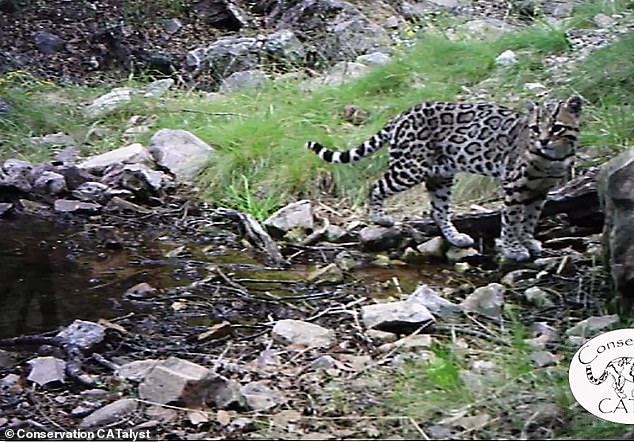
In 2019, conservationists captured a rare glimpse of the elusive ocelot in the wild of Arizona
Impressive footage from remote-sensor cameras shows the wild cat, nicknamed ‘Lil Jefe’, sipping from a creek in several places.
The footage came at a time when experts said at the time it was a “critical point” in ocelot conservation. The striking felines have long been victims of poaching and habitat loss, and are now increasingly threatened by plans for a border wall between the U.S. and Mexico.
According to the researchers, these wild animals are “extremely rare,” with only five found in Arizona since 2009.
These cats are found in the tropical and subtropical regions of North and South America. Arizona is the northernmost area of their range.
“These extraordinary images, captured by remote sensor cameras just north of the U.S.-Mexico border, offer a rare glimpse of one of North America’s most mysterious wild cats,” Conservation CATalyst said at the time.
